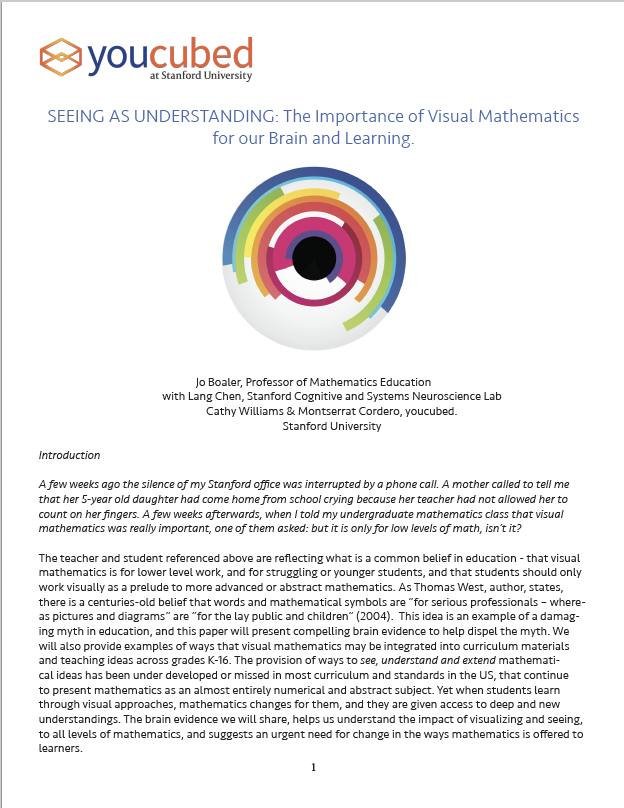
How does the brain function when students think about mathematics—or rather, "see" it? That question is posed in a new report entitled "Seeing as Understanding: The Importance of Visual Mathematics for our Brain and Learning", authored by Stanford University mathematics researcher Dr. Jo Boaler and brain researcher Dr. Lang Chen. The paper posits that according to embodied cognition researchers, the ways in which "we posture, gaze, gesture, point, and use tools when expressing mathematical ideas" contributes to students' abilities to understand and "hold" mathematical ideas in their brain.
Topic Area
Learning Disabilities / Differences
Math & Numeracy
Media Type
Document
Resource Type
Research/Evidence-Based Practice
PD Team
SABES Mathematics and Adult Numeracy Curriculum and Instruction PD Team
Action Type
Read


